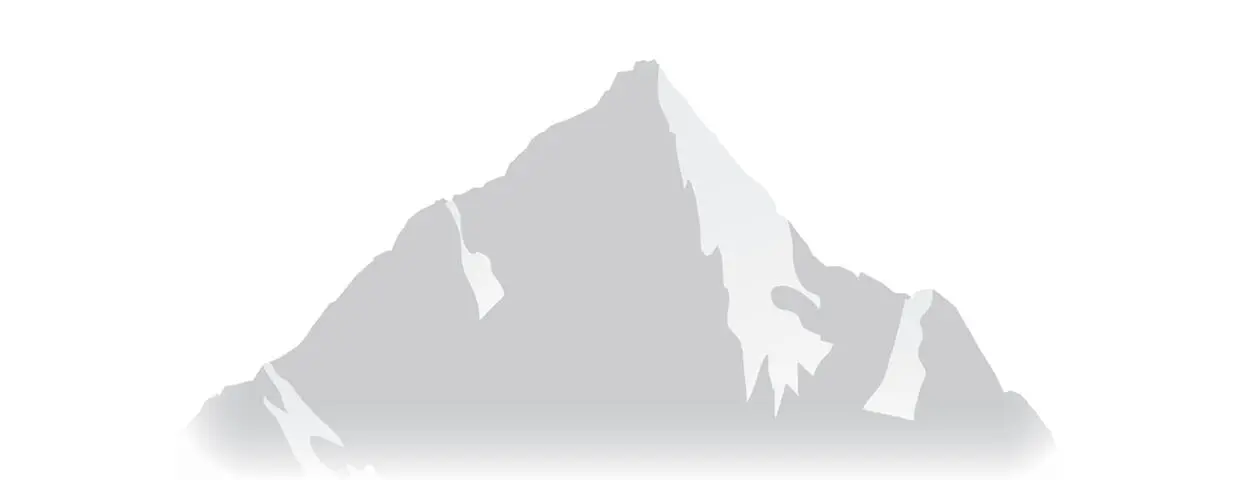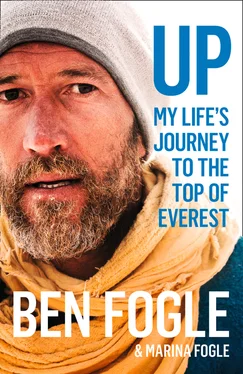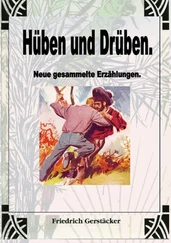I’d been told by a therapist that potentially difficult conversations are best had while walking. Raising your heart rate is good for the body and mind, and the fact that you’re looking ahead rather than looking intensely into each other’s eyes takes the edge off it. As we dipped into the Hambleden Valley, he told me his plan; that Kenton Cool, the rock star of the climbing world, had agreed to guide him, that he’d found a sponsor so that we didn’t have to re-mortgage our house. He told me about why he’d always wanted to do it and, while he recognised such a feat would always be dangerous, what he was planning to do to mitigate that risk.
We returned home, our cheeks red from the chilly spring breeze, the dogs exhausted and me understanding that Everest was now a reality.

There was only ever one contender when it came to who could help us achieve this dream: Kenton Cool. I had known Kenton for several years after we had met through a mutual friend, Sir Ranulph Fiennes. He had told me that should I ever decide to do some climbing, we should consider teaming up together. Five years passed before I gave him a call to ask if he would help Victoria and myself with our Everest dreams.
Kenton set out a two-year plan for our Everest attempt. Respect of the mountain and a dedication to the project would ensure we had the best chances of summiting. He wanted to break it up into three phases. The first would involve an Alpine expedition for Victoria to give her a feel for the mountains. After all, while I was still a relative novice when it came to mountain climbing, Victoria was a mountaineering virgin. Green. Once she had become familiarised, we would then head to Bolivia for a three-week training programme in the Andes. This would then be followed by more training in the European Alps, before the final stage which would be a pre-Everest expedition to Nepal.
Kenton is one of Britain’s most respected mountaineers who has an astonishing 12 summits under his belt. His climbing formula has been tried and tested so, although it would mean a huge amount of time away from family and work, I was committed to the plan.
The idea behind the programme was to build up our confidence using crampons, ice axes, ropes and harnesses. By the time we reached Everest, they needed to be second nature. We had to move efficiently and safely. It would also give us a chance to familiarise ourselves with mountain living. Once again, while I had plenty of experience of camping in the wilderness, for Victoria this would be a whole new experience.
Finally, it would also give us two years to get to know one another properly. To understand one another and to recognise our behaviours. The idea being that by the time we reached Everest, we would be able to know when something wasn’t right; we would understand the nuanced behavioural changes that may be a result of altitude sickness.
For someone who has embraced the slow life, I am quite an impatient person, and the two-year plan was a pretty big commitment. To be honest, it was probably tailored more towards Victoria’s inexperience, but we were a team and I relished the time we spent together.
In 2017, tragedy struck our tiny corner of West London. Just a few hundred metres from our house, Grenfell Tower caught alight and took more than 70 lives with her – some were friends. This tight-knit community was torn apart. It is still hard to think about. We pass the charred remains of that tragic building every day and we think about those lives lost.
It turned our little community upside down, but in those awful days and weeks after the inferno, a team of volunteers from the British Red Cross descended on North Kensington. It was both terrible and beautiful to see the same vehicles I had seen so often in faraway lands, now parked on my own street.
When Nepal was devastated by an earthquake back in 2015, the Red Cross had been one of the first aid agencies on the scene. I had long admired the Red Cross and decided that if I was going to climb Mount Everest, it would be in support of their incredible, heroic efforts at home and abroad. The countless volunteers across the world who selflessly dedicate their lives to improving the lives of others is true heroism, way greater than standing on the summit of any mountain.
Marina had given the green light. Kenton had agreed to help us prepare for Everest. We had agreed to support the British Red Cross and Victoria was fully committed to the expedition.
Now all we had to do was learn how to climb.

CHAPTER TWO
After a long summer in the Austrian Alps, I left Marina and the children and headed to the other side of the world, to La Paz in Bolivia, where our team would have a crash course in mountain climbing. Kenton had designed an expedition that would take us up four Andean peaks in ascending order, culminating in Illimani at just under 6,500 metres (or three-quarters of the height of our ultimate goal, Everest).
I had only met Victoria a handful of times, and although I had known Kenton for a few years, we were all comparative strangers. This would be a great opportunity to get to know one another, and also to see if we were suited to mountains.
I had made it very clear to Victoria that she had to be 100 per cent sure that she wanted to take on the highest mountain in the world. I knew the risks involved. Everest required respect and commitment. The two-year plan we had embarked on would take us away from families and work for long stretches, so we had to both be fully invested. I felt a sense of responsibility that would be mitigated by Victoria’s full commitment and devotion to the expedition. While mine was a childhood dream to climb Everest, hers was more about the ‘challenge’.
It was early morning when we landed in the highest capital city in the world, La Paz. At 4,000 metres, it is so high that emergency oxygen cylinders are provided around the airport for new arrivals struggling with the thin air.
Our little minibus hurtled through the empty streets. La Paz really is an astonishing city. In the bowl of a valley, it is surrounded by towering snow-capped peaks. We explored the city for a day or two to acclimatise, even visiting the Witches’ market with its dried llama foetuses, snakes, herbs and spells. There is something rather overwhelming in the enduring practice of witchcraft and folklore remedies.
We left the city for the peace and tranquillity of Lake Titicaca, the highest navigable lake in the world. I had first come here as a 19-year-old. I never forgot the haunting beauty of the lake with its floating reed islands and the fishermen’s iconic boats. We spent a day sailing the lake on a reed boat, stopping at the Island of the Sun for an afternoon hike. Slowly, the three of us were getting to know our different personalities and discovering how we might work as a team: Kenton, the slightly laid back and forgetful mountain guide (so forgetful he had failed to pack a headtorch and a satellite phone for the final peak); Victoria, the vegan and ex-Olympian; and me, the romantic daydreamer.
On the face of it, we were a pretty unusual trio.
Our first summit to tackle was in the Cordillera Real, a mountain range situated a couple of hours from La Paz, where we hiked to base camp. For Victoria, it was her first proper camping experience. Not only was she learning the new art of mountaineering and acclimatising to the thin air, but she was also a camping virgin. On top of this was the difficulty in catering for a vegan in meat-loving, milk-drinking South America, where the local idea of a vegetarian is having half a portion of meat.
Читать дальше














